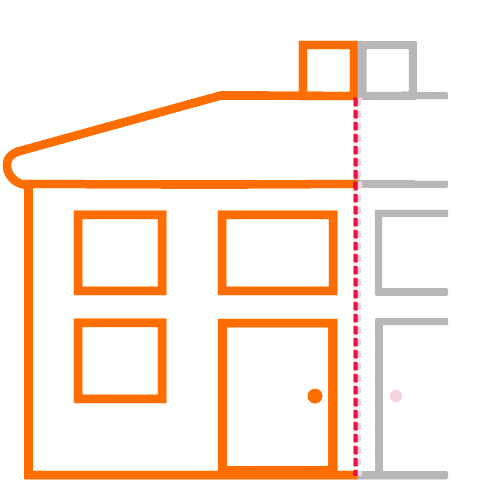Yes, you can install too much loft insulation, and exceeding the recommended thickness of 270mm can create significant problems in your home. While proper insulation saves money on energy bills, excessive amounts can trap moisture, leading to mold growth and structural damage. You'll need to maintain adequate ventilation and air gaps above the insulation to prevent these issues. Watch for warning signs like increased condensation on windows, persistent drafts, or unexplained rises in heating costs, which may indicate your insulation is too thick. Understanding the balance between insulation and ventilation will help you optimize your home's energy efficiency.
Understanding Optimal Insulation Thickness
Table of Contents
ToggleLoft insulation thickness plays a significant role in maintaining your home's energy efficiency. If you're considering upgrading your insulation, you'll need to understand that the current minimum recommended thickness is 270mm, a standard that's been in place since 2003 to guarantee peak performance in residential properties.
You'll find that upgrading your insulation can lead to substantial savings on your energy bills. When you increase from 120mm to the recommended 270mm, you can expect to save around £25 annually. If you're starting with thinner insulation of around 50mm, your potential savings increase to £50 per year.
However, you shouldn't assume that exceeding these recommended levels will yield better results. In fact, installing excessive insulation can create serious problems, including moisture buildup, mold growth, and potential structural damage to your property.
When you're installing insulation, it's essential to maintain an appropriate air gap, which allows moisture to escape and enhances the overall efficiency of your insulation system.
Regular inspections of your existing insulation thickness aren't just recommended – they're critical to verify compliance with building regulations and prevent over-insulation issues.
Signs of Excessive Insulation
While proper insulation thickness is important, you'll need to watch for warning signs that indicate you've gone too far. When you've installed too much loft insulation, you might notice increased condensation on your windows and persistent drafts throughout your home, which occur because excessive insulation can restrict proper airflow and ventilation in your loft space.
You should pay attention to your heating bills and temperature variations between rooms, as these can be telling indicators. If you're experiencing unexplained increases in heating costs or significant temperature differences from one room to another, your insulation might be too thick, preventing proper heat circulation throughout your home.
During winter months, be particularly vigilant for cold spots on your walls and the formation of ice dams on your roof, as these suggest that heat isn't escaping properly due to over-insulation.
Remember that while building regulations require a minimum thickness of 270mm, exceeding this measurement without ensuring adequate ventilation can lead to moisture buildup, potentially causing mold growth and structural damage to your property.
Regular monitoring of your insulation's condition and thickness will help you maintain peak performance.
Proper Installation Guidelines
Installing loft insulation correctly requires careful attention to several key guidelines. You'll need to maintain the current standard thickness of 270mm while guaranteeing proper ventilation to prevent moisture-related problems.
When laying the insulation, it's vital that you create adequate air gaps, which allow moisture to escape and maximize the insulation's effectiveness.
To achieve ideal results, you should consider professional installation, which typically costs between £150 and £400. These experts understand building regulations and can confirm your installation meets all required standards.
They'll also assess your existing insulation thickness to prevent over-insulation issues that could compromise your loft's performance. When selecting materials, you'll want to choose options like fiberglass or mineral wool that are specifically suited to your loft's intended use.
During installation, professionals will carefully evaluate the space to maintain proper airflow while achieving maximum heat retention. You'll need to regularly monitor your insulation's condition and thickness to guarantee it continues meeting building regulations and performing effectively.
Remember that exceeding the recommended thickness without proper ventilation considerations can lead to condensation problems, potentially undermining the insulation's benefits and creating long-term maintenance issues.
Balancing Insulation and Ventilation
Achieving the right balance between insulation and ventilation can make or break your loft's performance. While you might think that adding extra layers of insulation will increase your home's energy efficiency, you'll need to take into account how this affects air circulation throughout your space.
You'll want to be particularly mindful of maintaining adequate air gaps in your loft, as these are essential for allowing moisture to escape. When you're installing insulation, you should regularly assess its thickness to guarantee it doesn't exceed recommended levels, which can lead to restricted airflow.
If you've already installed thick insulation, you'll need to verify that it's not compromising your home's ventilation system. To protect your home's structure and prevent moisture-related issues, you'll need to complement your insulation with proper ventilation measures.
You can achieve this by installing roof vents or using breathable membranes that allow moisture to escape while maintaining insulation effectiveness. Remember that building regulations specify minimum insulation standards, but exceeding these without proper ventilation considerations can create more problems than benefits, including potential mold growth and structural damage from trapped humidity.
Maintaining Effective Loft Performance
Many homeowners overlook the long-term maintenance needed for ideal loft performance after installing insulation. You'll need to conduct regular assessments of your insulation thickness to prevent problems that can arise from over-insulation, including unwanted drafts and unexpected increases in your heating costs.
To maintain effective loft performance, you'll want to guarantee there's an adequate air gap above your insulation. If you've exceeded the recommended 270mm thickness, you're likely compromising this vital space, which can lead to moisture buildup and reduced insulation efficiency.
You should also monitor temperature variations between rooms, as these fluctuations often indicate that your insulation isn't performing as it should.
Installing proper vapor barriers and maintaining sufficient ventilation are essential steps you can't ignore. When you're checking your loft, look for signs of moisture accumulation or mold growth, as these are clear indicators that your insulation might be too thick and causing ventilation issues.
If you notice any of these problems, you'll need to address them promptly to prevent structural damage and guarantee your loft insulation continues to function effectively.





